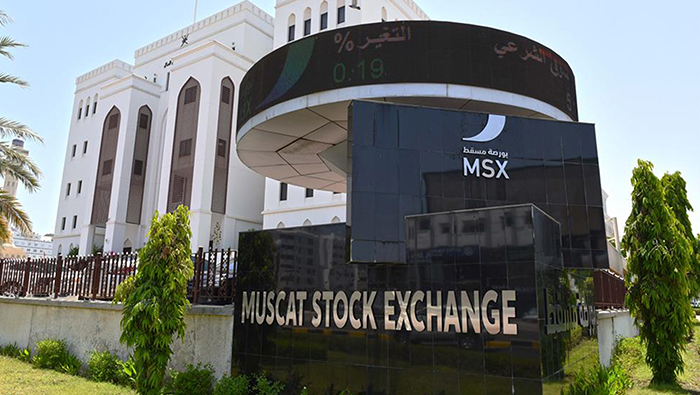
Muscat: After four consecutive months of gains, the Omani stock market witnessed marginal declines during July-2021, according to a new report.
“The index closed the month at 4,029.4 points with a decline of 0.8 per cent led by a broad-based decline seen in all the three sectoral indices on the exchange,” the Kuwait-based investment, strategy and research firm, Kamco Invest's GCC stock markets monthly report for July 2021.
The MSX 30 benchmark witnessed declines especially during the second half of the month after seeing consistent gains during the first half, retreating from a 17-month high of 4,132.33 points. The industrial index witnessed the biggest monthly decline among sectors at 3.1 per cent followed by Services and Financial indices with declines of 0.5 per cent and 0.3 per cent, respectively.
Nevertheless, despite the decline the the year-to-date 2021 (YTD-21) performance for the Industrial index remained the highest at 36 per cent followed by Financial and Services with returns of 14.1 per cent and 7.7 per cent, respectively, since the start of the year, Kamco Invest said in its report.
The MSX 30 Index reached a slightly lower YTD-21 gain of 10.1 per cent. Trading activity witnessed a steep monthly decline during July-2021 mainly led by the Eid holidays.
Total volume of shares traded during the month declined by 48.7 per cent to 342.1 million as compared to a 37 months high level recorded during June-2021 at 667.3 million shares.
Monthly value traded also witnessed a similar decline of 41.6 per cent to reach OMR53 million as compared to OMR90.7 million during June-2021.
The share of Omanis in the monthly trading activity recovered from last month’s decline. Omanis accounted for 87.9 per cent of the total value of buy trades during July-2021 as compared to 64.5 per cent in June-2021. In terms of value of sell trades, Omani’s share declined from 83.4 per cent in June-2021 to 81.7 per cent in July-2021, indicating they were net buyers during the month.
GCC markets gains
Equity markets in the Gulf Cooperation Council (GCC) were up for the ninth consecutive month during July-2021, although the gains were marginal as compared to the previous months, the Kuwait-based Kamco Invest said.
Monthly performance was mixed but skewed toward gainers. Dubai’s benchmark reported the biggest decline during the month at -1.6 per cent. Prominent gainers, on the other hand, were few including Abu Dhabi and Kuwait with returns of 7.1 per cent and 3.0 per cent, respectively, while Saudi Arabia and Qatari benchmarks showed only marginal gains.
As a result, the MSCI GCC index reported flattish performance with a gain of 1.0 per cent. YTD-21 gains at the end of July-2021 stood at 23.7 per cent, one of the best globally, and was backed by the rally in Abu Dhabi’s which was the best performing globally with a YTD-21 return of 45.0 per cent.
Qatar and Bahrain were the only benchmark with single digit YTD-21 gains, while the rest of GCC indices showed double digit performance, the report added.
The sector performance also reflected the overall mixed trend during the month with an almost equal split between gainers and losers. The Capital Goods index topped monthly performance with a gain of 10.2 per cent followed by Pharma & Biotech and Utilities indices with gains of 4.7 per cent and 4.2 per cent, respectively.
On the decliner’s side, the rally in the F&B index took a break resulting in a decline of 3.1 per cent followed by Food & Drug Retailing and Consumer Durable & Apparel index with declines of 2.9 per cent and 1.9 per cent, respectively.
Large-cap sectors like Banks and Energy showed flattish returns while the Materials sector reported a gain of 3.2 per cent.
In terms of global equity market performance, Emerging Market (EM) witnessed declines during the month, especially in Asia, while Europe and North American Markets showed gains.
The 5.4 per cent decline in China and 1.7 per cent decline in Russia pushed the EM index in the red with a decline of 7.0 per cent during July-2021, also dragging YTD-21 performance in the red with a decline of 1.0 per cent.